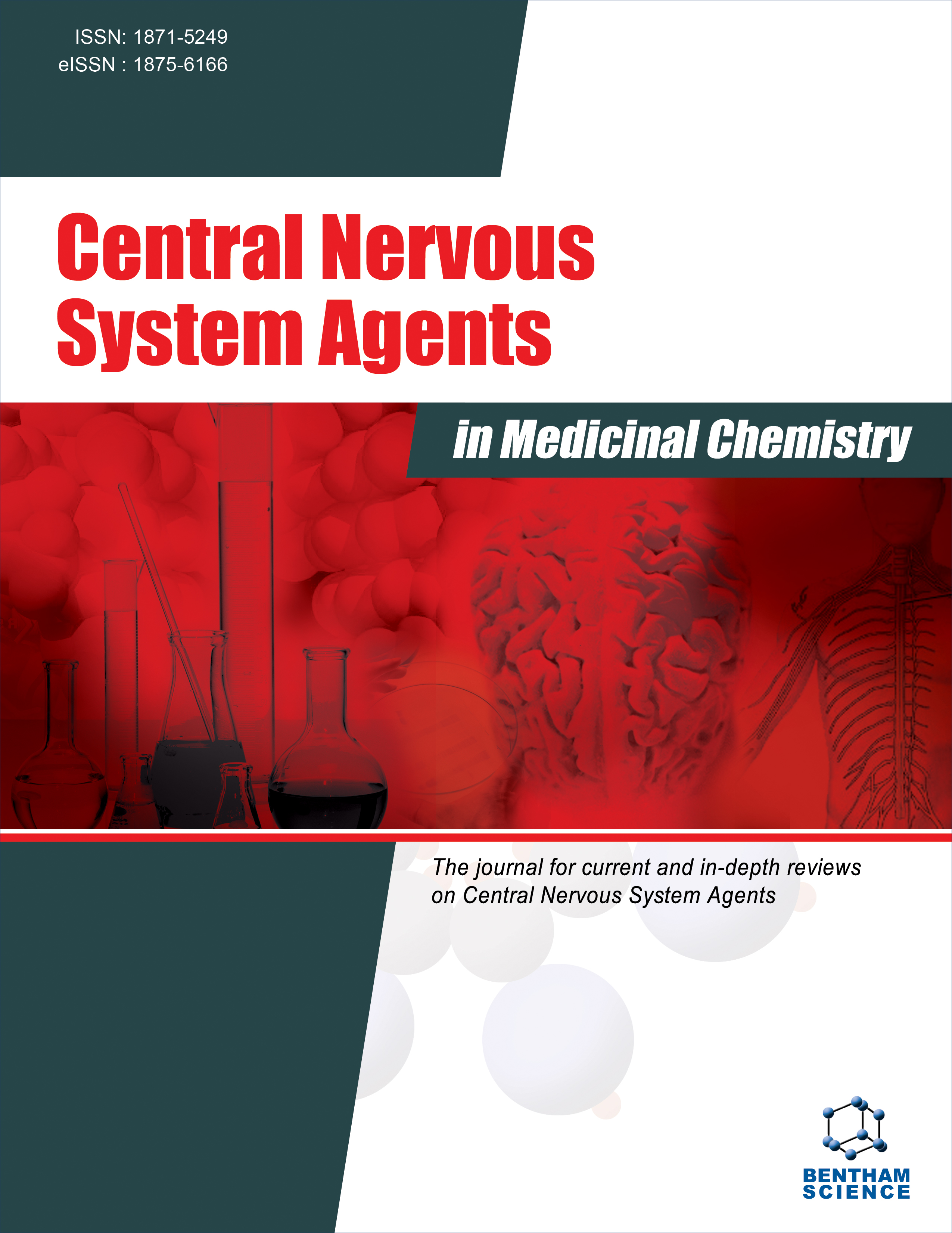- Home
- A-Z Publications
- Central Nervous System Agents in Medicinal Chemistry (Formerly Current Medicinal Chemistry - Central Nervous System Agents)
- Previous Issues
- Volume 7, Issue 2, 2007
Central Nervous System Agents in Medicinal Chemistry (Formerly Current Medicinal Chemistry - Central Nervous System Agents) - Volume 7, Issue 2, 2007
Volume 7, Issue 2, 2007
-
-
Neuronal Self-Repair Following Cerebral Ischemic Insults
More LessAuthors: Xinjian Zhu, Youming Lu and Dongya ZhuNeurogenesis continues throughout adulthood in the central nervous system in mammals. Cerebral ischemia induces neurogenesis in the subventricular zone and dentate gyrus. New neurons migrate to the granule cell layer of dentate gyrus or to the damaged CA1 region and striatum, where they differentiate into mature neurons and re-establish connections. Ischemic insults also promote axonal sprouting in ischemic p Read More
-
-
-
The Contribution of Nitric Oxide and Carbon Monoxide to Neuronal Function and Development
More LessAuthors: Rodrigo R. Resende, Marcella Faria and Henning UlrichNitric oxide (NO) and carbomonoxide (CO) are gaseous molecules that have been recently implicated in a series of activities in the nervous system. These cellular messengers function as neurotransmitters, and their neurodegenerative and neuroprotective actions observed in in vitro and in vivo suggest participation of these gases in cell survival and neuronal differentiation. Lack of NO resulted in cell death in neuronal cell lines a Read More
-
-
-
Snake Venom Polypeptides Affecting the Central Nervous System
More LessAuthors: Yu N. Utkin and Alexey V. OsipovThere are numerous evidences about the effects of crude snake venoms or isolated toxins on the peripheral nervous system. However, the data on their interactions with the central nervous system (CNS) are not so abundant, since the blood-brain barrier (BBB) impedes penetration of these compounds into the brain. There are several reviews describing the interactions of particular classes of snake venom polypeptides with Read More
-
-
-
Brain Senescence and Neuroprotective Dietary Components
More LessAuthors: Keiko Unno and Minoru HoshinoSenescence is an ageing process characterized by progressive and irreversible dysfunction of various physiological systems. Physiological senescence with advancing age is not a disease, but it affects the life-span and life-quality of elderly people. Brain functions such as cognition and motor skills, as with other organ systems, are impaired in almost all elderly people. Neuroprotective dietary components can play a key Read More
-
-
-
Regulators of the G1 Phase of the Cell Cycle and Neurogenesis
More LessAuthors: Maryline Paris and Ourania M. AndrisaniDuring neurogenesis, precursor cells undergo a defined number of divisions and terminally differentiate as postmitotic neurons. In the adult mammal, under certain conditions, postmitotic neurons re-enter the cell cycle and divide. The accumulated evidence demonstrates that the precise control of cell-cycle progression is critical for both neuronal development and maintenance of the neuronal phenotype. Cyclin-d Read More
-
-
-
Therapeutic Potential of Metabotropic GABA (GABAB) Receptors and their Effector Ion Channels
More LessBy Rafael LujanThe discovery of metabotropic gamma-aminobutyric acid(B) (GABAB) receptors has enormously influenced our understanding of GABAergic neurotransmission in the central nervous system. These G-protein coupled receptors play critical roles in neuronal and glial functions, such as neuronal excitability and modulation of synaptic neurotransmission. Moreover they are involved in a variety of neurodegenerative and p Read More
-
-
-
T11TS/SLFA-3 Differentially Regulate the Population of Microglia and Brain Infiltrating Lymphocytes to Reduce Glioma by Modulating Intrinsic Bcl-2 Expression rather than p53
More LessT11TS/SLFA-3, the glycoprotein isolated from sheep erythrocyte membrane, acts as an antineoplastic agent causing apoptotic elimination of glioma cells through cell mediated immune response. Therefore, elucidation of the proper balance in proliferation and apoptosis of neuroimmune components viz. microglia and brain infiltrating lymphocytes with the neoplastic glial cells was the fundamental issue to establish the effi Read More
-
Volumes & issues
-
Volume 25 (2025)
-
Volume 24 (2024)
-
Volume 23 (2023)
-
Volume 22 (2022)
-
Volume 21 (2021)
-
Volume 20 (2020)
-
Volume 19 (2019)
-
Volume 18 (2018)
-
Volume 17 (2017)
-
Volume 16 (2016)
-
Volume 15 (2015)
-
Volume 14 (2014)
-
Volume 13 (2013)
-
Volume 12 (2012)
-
Volume 11 (2011)
-
Volume 10 (2010)
-
Volume 9 (2009)
-
Volume 8 (2008)
-
Volume 7 (2007)
-
Volume 6 (2006)
Most Read This Month
Article
content/journals/cnsamc
Journal
10
5
false
en


